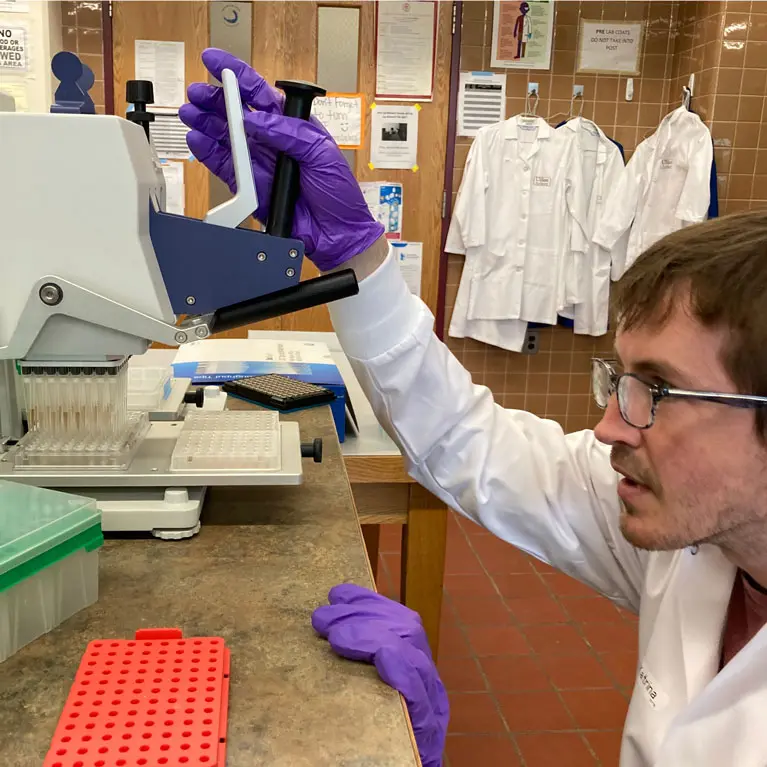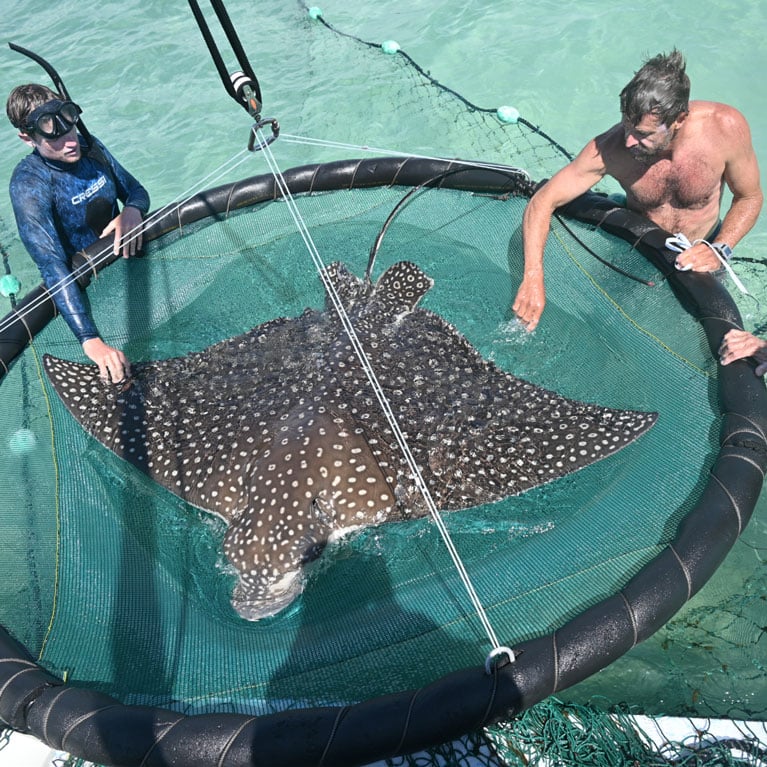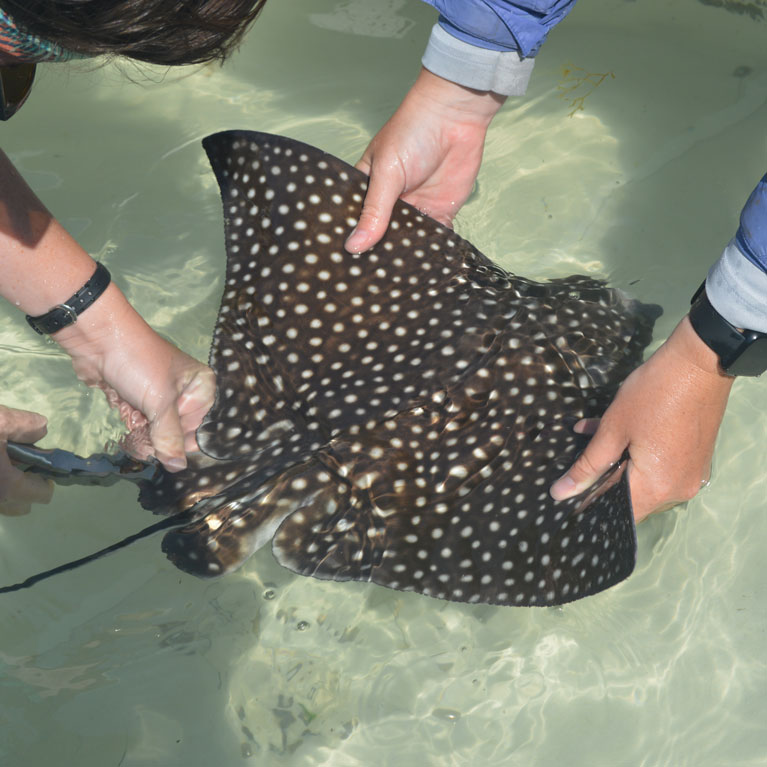Counting eagle rays with close-kin mark-recapture
John is developing new ways to count endangered whitespotted eagle rays in the eastern Gulf of Mexico. Called close-kin mark-recapture, the method combines the latest in genomics and statistics to assess shark and ray populations. Once refined, it may allow us to understand the scale of whitespotted eagle ray population declines.
I don’t know why or where it came from, but I have felt drawn to the ocean and captivated by elasmobranchs (sharks and rays) for as long as I can remember. Over the years, as I studied elasmobranch biology and sought opportunities to interact with the animals, my casual interest transformed into a passion; the more I’ve learnt, the more I’ve come to realise how exceptional sharks and rays are. Their uniqueness arises from their evolutionary history. Sharks and rays (and chimaeras) took their own evolutionary path relative to other vertebrates about 450 million years ago. This does...




Estimating abundance of whitespotted eagle rays using genome-wide markers and close-kin mark-recapture
The ultimate goal of this project is to use close-kin mark-recapture to estimate the abundance of whitespotted eagle rays in the eastern Gulf of Mexico while developing resources and protocols that will help other elasmobranch researchers integrate this promising tool into their toolkit.
The whitespotted eagle ray Aetobatus narinari is a globally Endangered species that has experienced worldwide population reductions of between 50% and 79% over the past 30 years. Close-kin mark-recapture can help us to understand the scale of these reductions in the eastern Gulf of Mexico, giving us better data to inform the conservation and management of the species.
The threats facing elasmobranchs are numerous and complex, from targeted fishing for consumption to non-targeted removal as bycatch and recreational fishing for sport. As solutions are sought and ways to implement them explored, populations continue to be exploited at rates that are difficult to quantify because tracking the abundance of these elusive animals has proven very difficult. This makes it challenging to manage elasmobranch populations in a sustainable way. However, recent breakthroughs in technology may offer a solution to this conundrum.
Close-kin mark-recapture is an emerging approach that is likely to revolutionise elasmobranch conservation. It fuses the burgeoning fields of genomics and population modelling by analysing genomic data in a mark-recapture framework to give estimates of population abundance, survival and other key demographic parameters. Importantly, close-kin mark-recapture can be applied in settings where samples are obtained lethally or non-lethally, making it useful for species that are caught in fisheries and also endangered species that are caught and released alive. Further, close-kin mark-recapture allows researchers to estimate adult abundance using samples from juveniles alone and therefore could be a great tool for researchers studying elasmobranchs that are most easily caught as juveniles in nursery habitats.
The goal of this project is to apply close-kin mark-recapture to estimate the abundance of whitespotted eagle rays in the eastern Gulf of Mexico. This species is globally Endangered and its populations face an array of threats, from overfishing and habitat loss to increases in the frequency of toxic algae blooms. However, it is difficult to quantify the scale of these threats because reliable estimates of population abundance are scarce. By estimating the abundance of the population in the eastern Gulf of Mexico, this project will provide key information for future population and species assessments for the whitespotted eagle ray.
The broad aim of this project is to estimate the abundance of whitespotted eagle rays in the eastern Gulf of Mexico. To accomplish this, we will complete the following specific objectives:
- Generate genome-wide DNA sequence pilot data from a subset of whitespotted eagle ray samples.
- Use the pilot data to develop targeted genotyping panels for the species.
- Generate genome-wide DNA sequence data for all samples of whitespotted eagle rays using targeted genotyping panels.
- Estimate the abundance of whitespotted eagle rays in the eastern Gulf of Mexico using close-kin mark-recapture.

